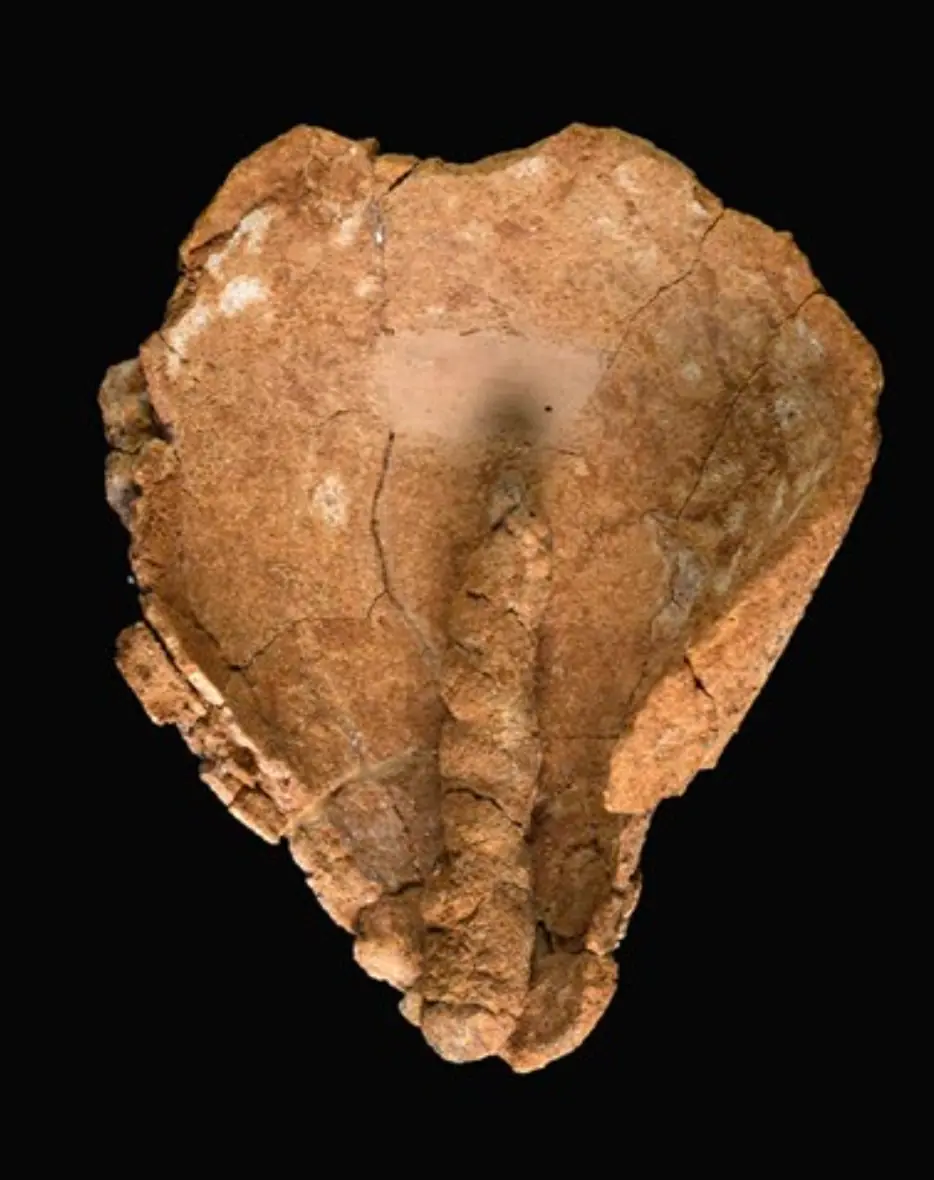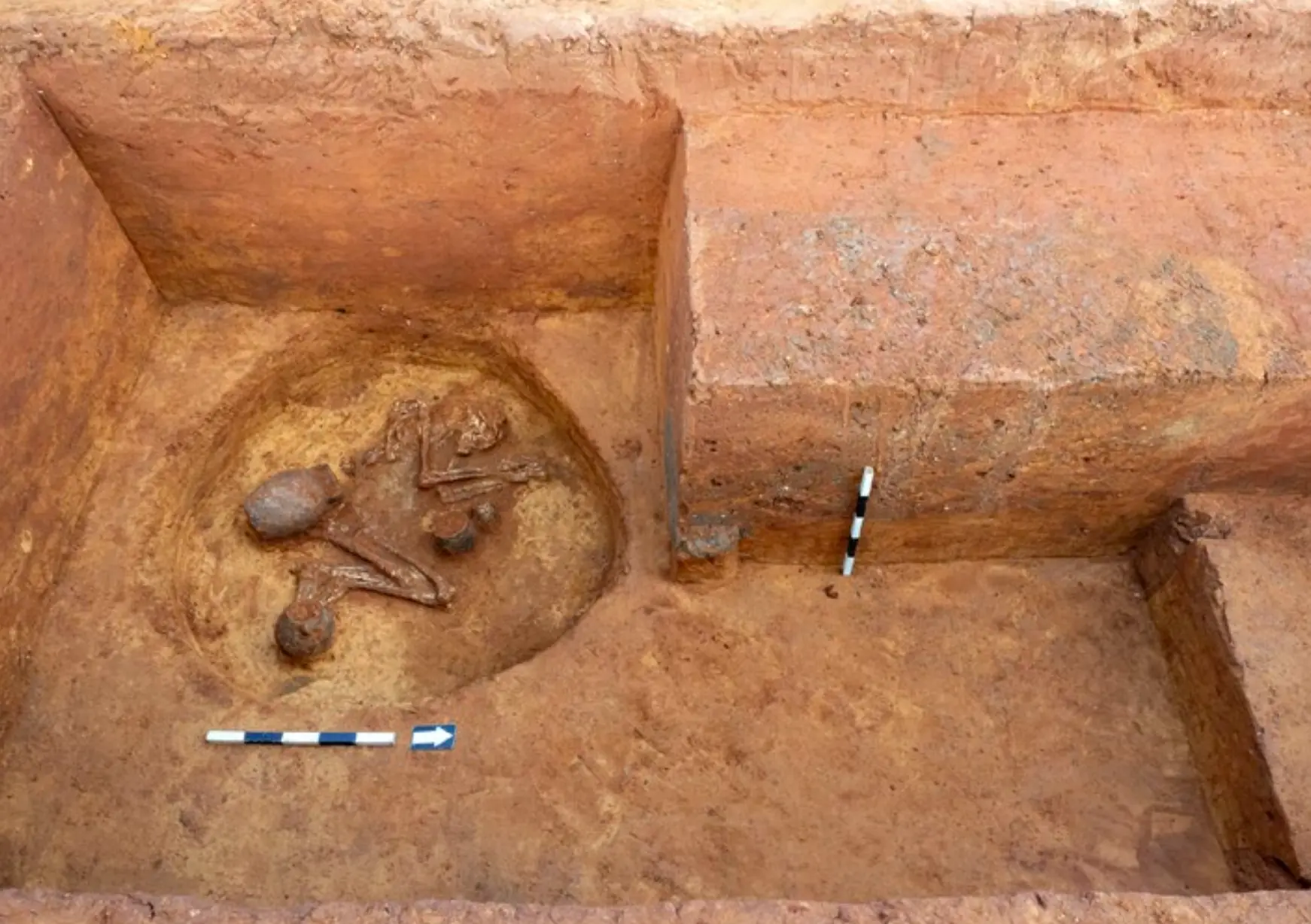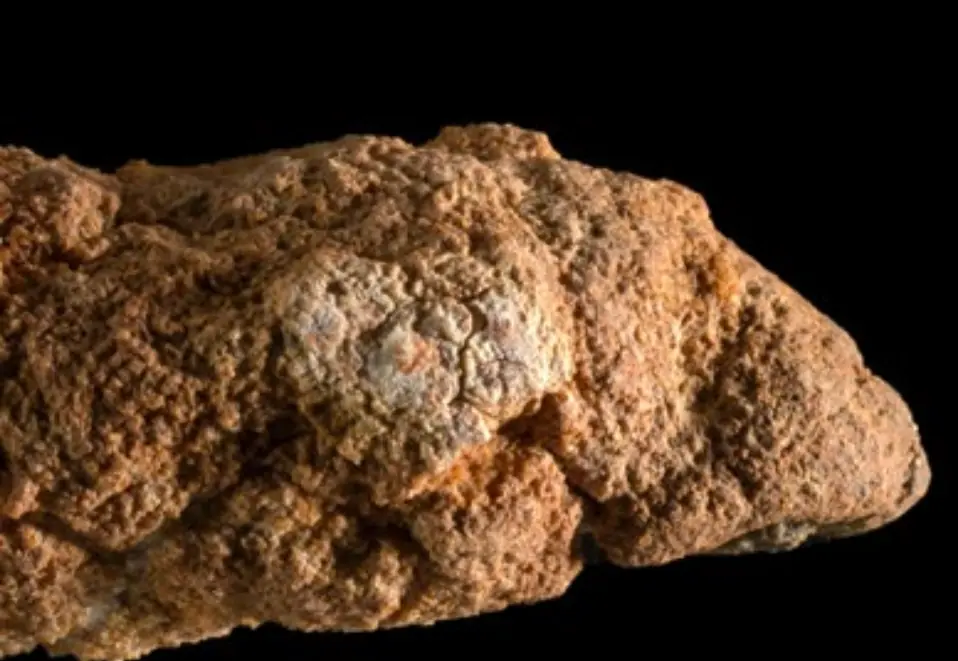
4000 year old wick discovered in Newe Efrayim
Alexis Drakopoulos
Alexis Drakopoulos is a Greek Cypriot Machine Learning Engineer working in Financial Crimes. He is passionate about Archeology and making it accessible to everyone. About Me.
A remarkable discovery at the Newe Efrayim cemetery in central Israel has shed light on ancient textile practices. Archaeologists have unearthed well-preserved oil lamp wicks dating back approximately 4,000 years to the Intermediate Bronze Age. This find not only provides insight into the technology of the time but also highlights the recycling of textiles in ancient societies.
September 1, 2025
Archeology, History
In the quiet darkness of a sealed tomb, the living leave behind objects to accompany the dead. Among the pottery, beads, and weapons, a simple clay lamp often sits, a vessel for light in an eternal space. For archaeologists, these lamps are common finds, but a crucial component is almost always missing: the wick. Made of organic fiber, designed to be consumed by flame, the wick is one of the most ephemeral objects of antiquity. Its survival across millennia requires an extraordinary confluence of circumstances.
A recent discovery from a large cemetery in central Israel has brought this transient object into the light. Excavations at Newe Efrayim have uncovered some of the earliest known oil lamp wicks, dating back approximately 4,000 years to the Intermediate Bronze Age [1, p. 2]. Their exceptional preservation in a humid Mediterranean climate, where organic materials typically decompose rapidly, offers a rare window into ancient technology and daily life [1, p. 3]. These are not just scorched threads; they are artifacts that tell a story of production, resourcefulness, and the final stage in the long life of a valuable material: textiles. An analysis of the wicks from Newe Efrayim reveals the technological solutions for creating a common, single-use item and provides clear evidence for the secondary use and recycling of cloth in the ancient world [1, p. 2].

The City of the Dead at Newe Efrayim
In recent years, extensive excavations west of the modern city of Yehud have uncovered a vast necropolis from the Intermediate Bronze Age (IBA), a period dated from roughly 2500 to 2000 BCE [1, p. 3]. The cemetery at Newe Efrayim spans approximately 45 dunams (around 11 acres) and contains over 1,200 sealed tombs [1, p. 3]. This period in the southern Levant is often characterized by the collapse of the urban centers of the Early Bronze Age and a shift toward a more rural and pastoral way of life; consequently, cemeteries provide some of the most important evidence for the era's material culture and social practices [2, p. 10; 3, p. 128].
The vast majority of the tombs are shaft tombs, where a vertical shaft was dug from one to seven meters deep into the earth, opening into a burial chamber at the bottom [1, p. 3]. Most contained a single individual laid on their side in a flexed position, accompanied by burial offerings [1, p. 3]. These goods included ceramic vessels, the bones of animal offerings, metal weapons, and stone beads [1, p. 3]. Among the most common ceramic finds were oil lamps, which appear for the first time as a distinct vessel type during this period [1, p. 3].
Lamps were found in about 20% of the excavated tombs at Newe Efrayim, interred with men, women, and children alike [1, p. 5]. They fall into two main categories: bowl-shaped lamps with a single pinched spout for a wick, and similar bowls with four spouts pinched into the rim [1, p. 5]. These lamps were handmade and sometimes decorated with incisions. The design of the nozzle was a key functional element, as it held the wick in place and kept it from sliding into the oil reservoir [1, p. 5]. Significantly, roughly a quarter of the lamps found bear soot marks, indicating they were used, either before the burial or as part of the funerary ritual itself [1, p. 5]. It was inside three of these ancient lamps that excavators found the remains of the wicks themselves [1, p. 6].
A Fossilized Flame
Organic materials rarely survive in the damp, microbial-rich soils of the Mediterranean [1, p. 3; 4, p. 243]. Textiles, leather, and wood quickly decay unless preserved under specific conditions, such as the extreme aridity of the Egyptian desert, the anaerobic environment of a waterlogged site, or through mineralization from contact with corroding metals [5, p. 98; 4, p. 244; 6, p. 2]. The Newe Efrayim wicks, however, survived through a different and more unusual process: fossilization [1, p. 9].

Of the three wicks identified, one (Wick 21702 from Lamp 21689) was exceptionally well-preserved. It survived to a length of 8 cm with a diameter of 1.5 cm and was fossilized along its entire length, with clear soot marks at both ends [1, p. 6]. Under microscopic examination, the fossilized surface revealed the distinct texture of a woven fabric. Small, well-preserved areas showed a plain weave, also known as a tabby weave, where weft threads alternate over and under the warp threads [1, p. 6]. This structure definitively shows that the wick was not made from a bundle of raw spun fibers, but from a piece of finished cloth [1, p. 6].
To understand how these delicate structures were preserved, the wicks and surrounding sediment were subjected to scientific analysis using X-Ray Fluorescence (XRF) and Fourier-Transform Infrared Spectroscopy (FTIR) [1, p. 9]. These techniques analyze the elemental and molecular composition of materials [7, p. 49; 8, p. 230]. The results showed that the original organic material of the wick—the plant cellulose—was gone. In its place were calcite, clay, and quartz [1, p. 9]. While the local soil inside the lamps consisted mainly of clay and quartz, the wick itself was composed primarily of calcite [1, p. 9]. This compositional difference indicates that the wick was not simply infiltrated by surrounding sediment. Instead, it underwent a specific process of calcification that replaced the organic fibers while preserving their woven texture [1, p. 9].
This type of fossilization is not fully understood but is known from other archaeological contexts, including zoological and botanical remains [1, p. 10]. The process is likely linked to bacterial activity. Certain bacteria, commonly found in soil, can metabolize organic matter—such as the flax fibers of the wick or the lipid residues from the lamp oil absorbed into it—and secrete calcite as a byproduct [1, p. 10]. Over time, this bacterial action replaced the decaying cellulose with a durable mineral cast, creating a fossil of the wick. This unique taphonomic process created the perfect conditions for long-term preservation in a climate that is typically hostile to such artifacts [1, p. 10].
The Craft of Making a Wick
The detailed preservation of Wick 21702 allows for a reconstruction of its manufacture. Analysis of the fibers was not possible, but based on the period and region, it was almost certainly made of linen [1, p. 8]. Linen, derived from the flax plant (Linum usitatissimum), was the dominant textile in the Bronze Age Levant [1, p. 8; 9, p. 9]. Historical sources and experimental archaeology confirm that linen is an ideal material for wicks, as it absorbs fuel efficiently and burns slowly and steadily [1, p. 8]. In contrast, wool burns poorly and produces a foul odor [10, p. 140]. Flax was cultivated in the Near East from the Neolithic period onward and was used to produce a wide variety of textiles, from coarse ropes to fine clothing [9, p. 9; 11, p. 1].

The Newe Efrayim wick was constructed using a technique still found in modern ropemaking. First, a long, narrow strip was cut from a finished piece of linen cloth [1, p. 11]. This strip was twisted, likely to the left, creating what is known as an S-twist in the fibers. The twisted strip was then folded in half and twisted again in the opposite direction, to the right, forming a Z-twist ply [p. 6, 11]. This method of twisting in opposite directions creates a strong, stable cord that does not easily unravel [1, p. 11]. The resulting wick was relatively thick, making it suitable for the wide, open nozzles of the IBA bowl-lamps and capable of sustaining a long-lasting flame [1, p. 12]. The Egyptian hieroglyph for a wick even depicts a twisted rope, suggesting this was a widely recognized form [1, p. 11].
The soot marks at both ends of Wick 21702 are intriguing. This could mean it was lit from one end, extinguished, and later lit from the other. Alternatively, the second end may have been intentionally scorched during its manufacture to prevent the cut fabric from fraying, a practical step to strengthen the final product [1, p. 8]. The other two wicks from Newe Efrayim were more poorly preserved, appearing as fossilized textile fragments and soot stains inside their lamps [1, p. 8]. Microscopic examination revealed areas of plain weave, confirming they too were made from cloth [1, p. 8]. It is possible these were not twisted cords but simply wads of fabric placed in the lamp—a less efficient but functional method also attested in later periods [1, p. 9].
Worn Threads, New Light: The Economics of Recycling
The fact that the Newe Efrayim wicks were made from finished cloth is perhaps their most significant feature. Textiles in the ancient world were valuable commodities. The process of cultivating flax, processing the fibers, spinning the thread, and weaving the cloth was immensely labor-intensive [12, p. 3; 13, p. 87]. It is therefore highly improbable that cloth would have been produced specifically to be cut up and burned as a disposable wick [1, p. 13]. Instead, the wicks from Newe Efrayim are clear evidence of secondary use, a sophisticated system of reuse and recycling driven by the high value of raw materials [1, p. 13].
This practice was not unique to the Intermediate Bronze Age Levant. A corpus of 59 wicks from Tell el-Amarna in Egypt, dating to the Late Bronze Age (c. 1346–1332 BCE), were also made from twisted strips of linen [1, p. 12]. Some of these Amarna wicks even retained decorative elements like fringes, indicating they were cut from worn-out garments [1, p. 13]. Another linen wick, twisted into a cord just like the one from Newe Efrayim, was found inside a ceramic lamp from Thebes, Egypt (c. 1580–1320 BCE) [1, p. 12].
Written records from Egypt reinforce the archaeological evidence. A letter from the reign of Ramesses II (thirteenth century BCE) includes a request for fabric strips, measured by weight, for making wicks [1, p. 14]. Another, from the time of Ramesses III (twelfth century BCE), lists a request for "old clothes for wicks" alongside other supplies like ochre and tallow [1, p. 14]. Centuries later, rabbinic sources such as the Mishnah discuss making wicks for Sabbath lighting from worn-out clothing, including the trousers of priests [1, p. 14].
These examples suggest a well-established life cycle for textiles in antiquity. A garment or cloth would first be used for its primary purpose. As it wore out, it would be mended repeatedly. Once it was beyond repair, it would be cut up and repurposed, perhaps as patches, rags, bandages, or wrappings for other objects [1, p. 13]. Only at the absolute final stage of its usable life, when the fabric was reduced to scraps, would it be relegated to its last and least glamorous role: as a fuel-soaked, flammable wick destined for consumption [p. 14]. This practice represents an optimal and logical system of resource management. The daily need for disposable wicks was met not by producing new material but by making maximal use of an existing valuable resource [1, p. 14]. While there is no evidence for an organized textile recycling industry in the IBA, as existed in the Roman period, the practice was clearly systematic and widespread [1, p. 14].
Conclusion
The discovery of textile wicks in the tombs of Newe Efrayim provides a rare and detailed glimpse into an overlooked aspect of Bronze Age life. Preserved by a fortuitous process of bacterial fossilization, these 4,000-year-old artifacts are among the earliest of their kind ever found. They are not merely ancient objects but documents of technology, economy, and human behavior.
They show that the people of the Intermediate Bronze Age used a sophisticated cord-making technique to produce durable wicks, a method that would persist for millennia. More importantly, they confirm that these wicks were made from recycled textiles. In a world of limited resources and labor-intensive production, cloth was too valuable to be created for a single, fiery use. Instead, it was used and reused until its fibers could serve no other purpose than to carry a flame. The wicks also suggest a practical correlation between technology and design: the large, open bowl-lamps of the period required larger, more substantial wicks, for which twisted cloth was an ideal solution [1, p. 13]. Later, as lamps evolved into closed forms with smaller nozzles, wicks made from spun fibers became more common [1, p. 13].
These small, fossilized scraps of linen from Newe Efrayim illuminate more than just a Bronze Age tomb. They shed light on the pragmatic and resourceful mindset of ancient peoples, for whom waste was a luxury they could not afford. Even in death, as they equipped their loved ones for the afterlife, their choice of materials was grounded in a world where every thread counted.
References
- Sukenik, N., Maor, Y., Agmon, Y., Elisha, Y., & Itach, G. (2025). Secondary Use of Textiles for Wick Production in Light of the Finds from the Intermediate Bronze Age Cemetery at Newe Efrayim. ’Atiqot, 118(1). https://doi.org/10.70967/2948-040x.2316
- Greenberg, R. (n.d.). Introduction to the Levant during the Early Bronze Age. In T. (Ed.), The Archaeological Record (pp. 270-).
- Laneri, N. (Ed.). (2007). *Performing death: Social analyses of funerary traditions in the ancient Near East and Mediterranean*. The Oriental Institute of the University of Chicago.
- Cronyn, J. M. (1990). The elements of archaeological conservation. Routledge.
- Fisher, M. T., & Stein, G. J. (2014). Aks of war: A digital museum inventory for a war-torn Afghanistan. In A. Jamieson (Ed.), Collections at risk: Sustainable strategies for managing Near Eastern archaeological collections workshop proceedings, 9th ICAANE, Basel 2014, Vol. 1 (pp. 449–463). University of Melbourne.
- Cybulska, M., & Maik, J. (2007). Archaeological textiles – A need for new methods of analysis and reconstruction. *FIBRES & TEXTILES in Eastern Europe*, *15*(5-6), 64-65.
- Amadio, M. (2017). *Architecture and Urbanisation in Bronze Age Cyprus: local and regional innovations in materials, technology and social representation* [Doctoral dissertation, University of Reading].
- Killebrew, A. E. (1999). Ceramic craft and technology during the Late Bronze and Early Iron Ages: The relationship between pottery technology, style, and cultural diversity [Doctoral dissertation, The Hebrew University of Jerusalem].
- Breniquet, C. (2014). The archaeology of wool in early Mesopotamia: Sources, methods, perspectives. In C. Breniquet & C. Michel (Eds.), Wool economy in the ancient Near East and the Aegean: From the beginnings of sheep husbandry to institutional textile industry (pp. 52-78). Oxbow Books.
- Fantalkin, A., & Yasur-Landau, A. (Eds.). (2008). Bene Israel: Studies in the archaeology of Israel and the Levant during the Bronze and Iron Ages in honour of Israel Finkelstein (Culture and History of the Ancient Near East, Vol. 31). Koninklijke Brill NV.
- Elsharnouby, R. M. A. (n.d.). Linen in Ancient Egypt. Journal of the General Union of Arab Archaeologists, 51, 1-9.
- Levy, J. (2021). *Clothing in Prehistory in the Southern Levant: Representations and Artifacts*. ResearchGate. https://www.researchgate.net/publication/351372681
- Padgham, K. (2014). *The scale and nature of the Late Bronze Age economies of Egypt and Cyprus*. BAR Publishing. https://doi.org/10.30861/9781407312224
